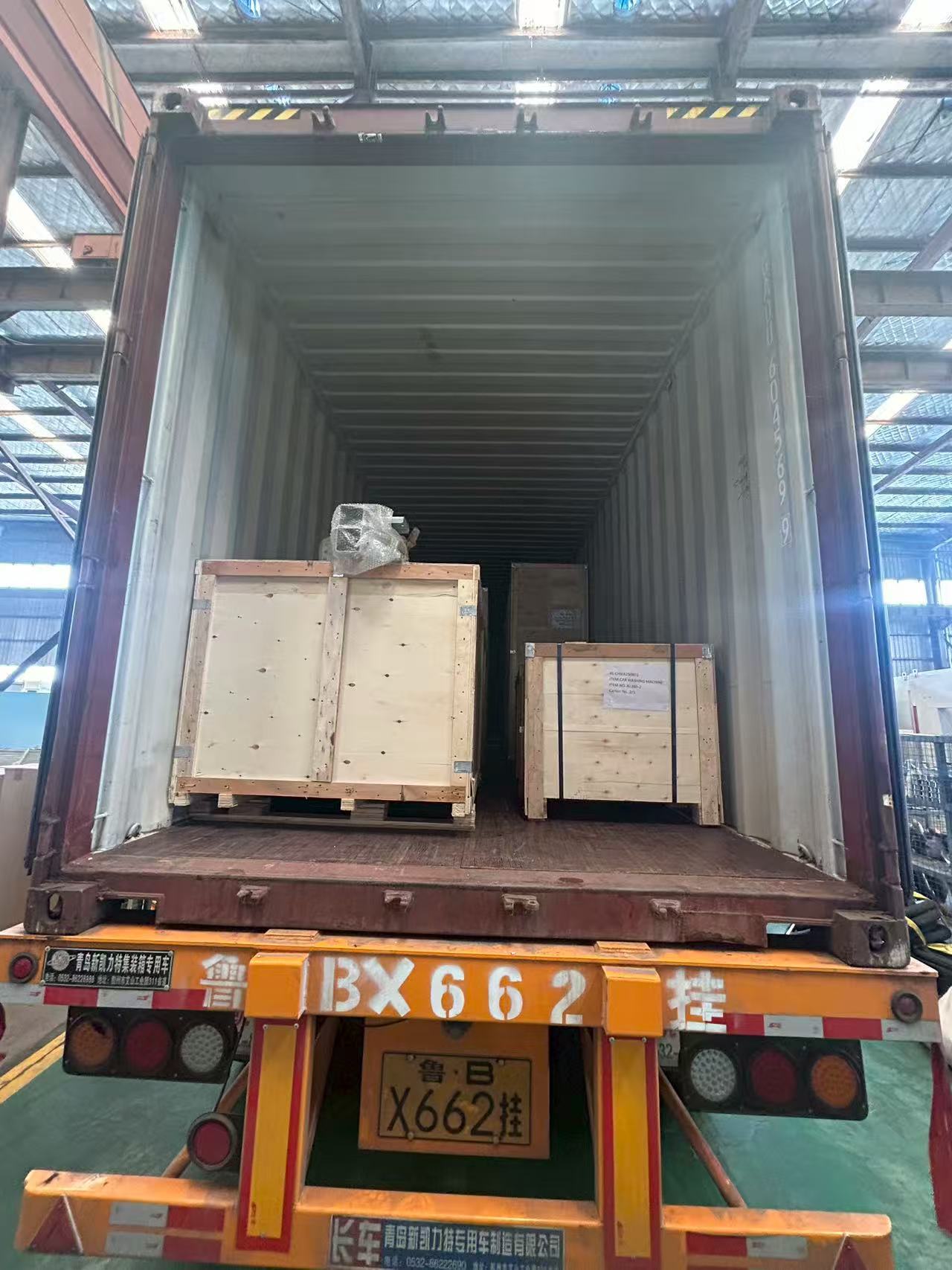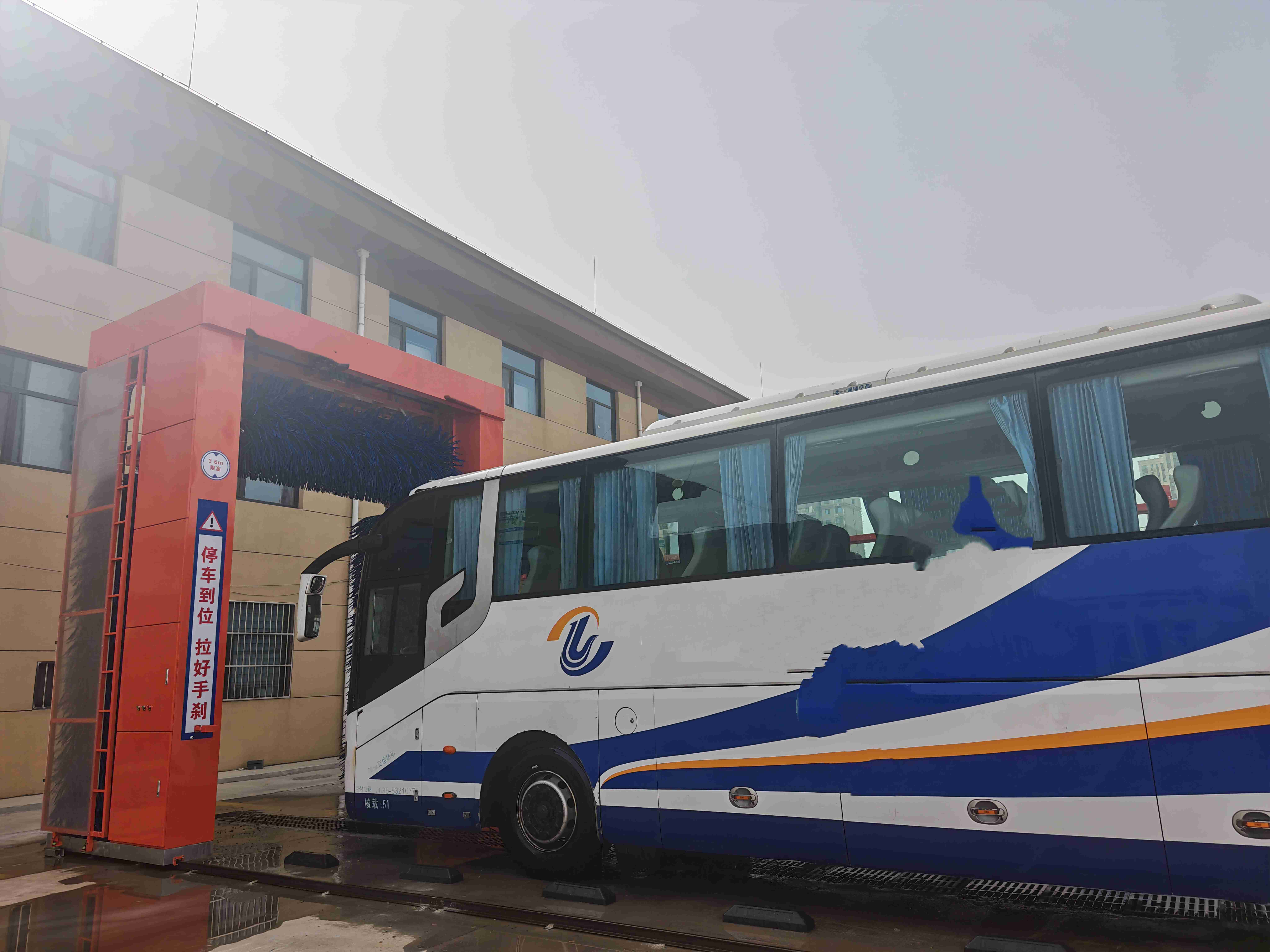The reciprocating bus washing machine is primarily used for cleaning the exterior of buses. This washing equipment mainly consists of a gantry structure, top brush unit, large vertical brush units, travel system, electrical control system, and mobile cable trough conveyor pipes.

1) **Gantry Structure**: Made from 4.5mm thick steel plates (up to 8mm in certain areas) processed via laser cutting for precise positioning of components. Assembled using a tenon-and-mortise structure, hot-dip galvanized, and finished with Taiwan Dahua paint.
2) **Top Brush Unit (1 unit)**: Comprises a rotating mechanism and a lifting mechanism. The lifting mechanism is driven by a motor that moves wheels on both sides, with nylon belts wound around the wheels connected to the top brush for upward and downward movement.
3) **Large Vertical Brush Units (2 units)**: Consist of a pair of large vertical brush rotating mechanisms. Driven by pneumatic cylinders, the brushes move left and right. The expansion and retraction of the brushes are achieved by changes in resistance between the brush strips and the vehicle surface.
4) **Travel System**: Installed on base frames on both sides, driven by a减速传动系统 (deceleration transmission system) that activates sprockets and travel wheels, allowing the washer to move along guide rails.
5) **Electrical Control System**: Housed in an electrical control cabinet mounted on the frame. Automatic control of the washer is achieved via a computer touch screen. The core of the control system is a programmable logic controller (PLC), which uses photoelectric sensors, proximity switches for detection, and current sensors for control to manage the top brush, large vertical brushes, and travel system.
6) **Mobile Cable Trough Conveyor Pipes**: Provide insulated protection for stretched water, electrical, and pneumatic lines, ensuring wear resistance.
